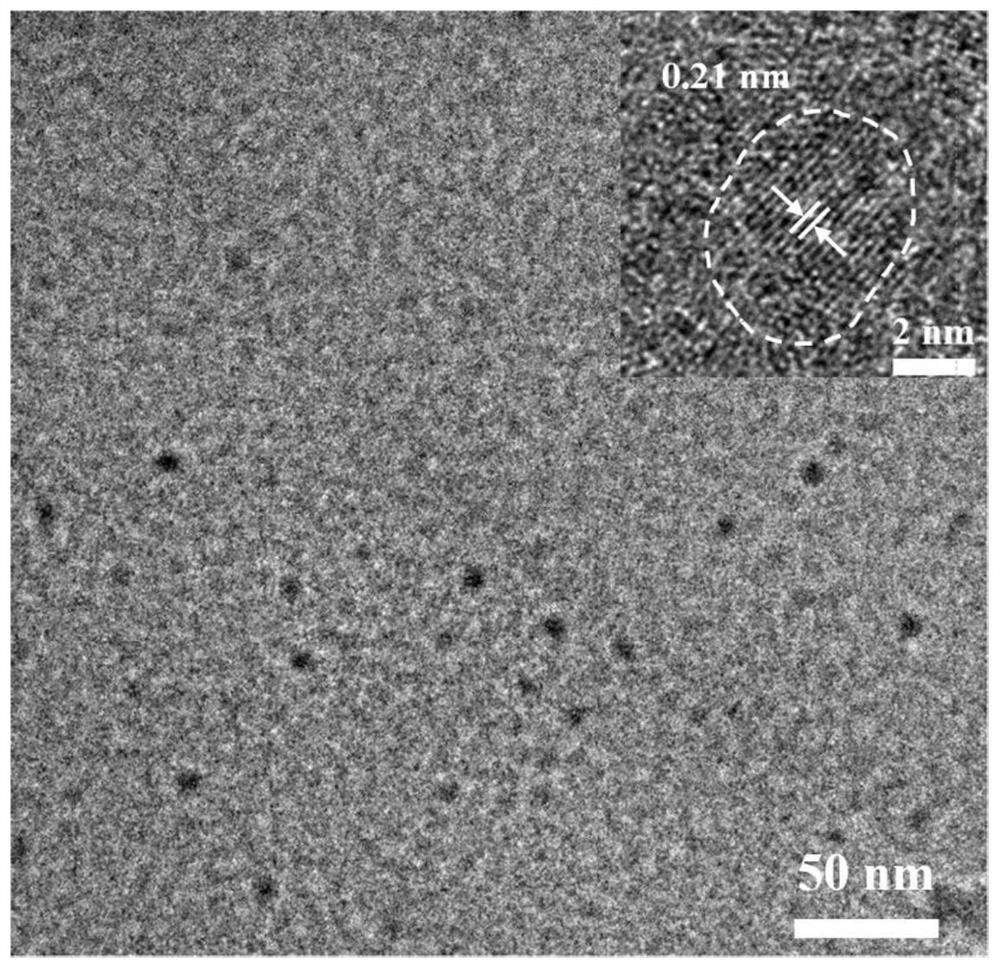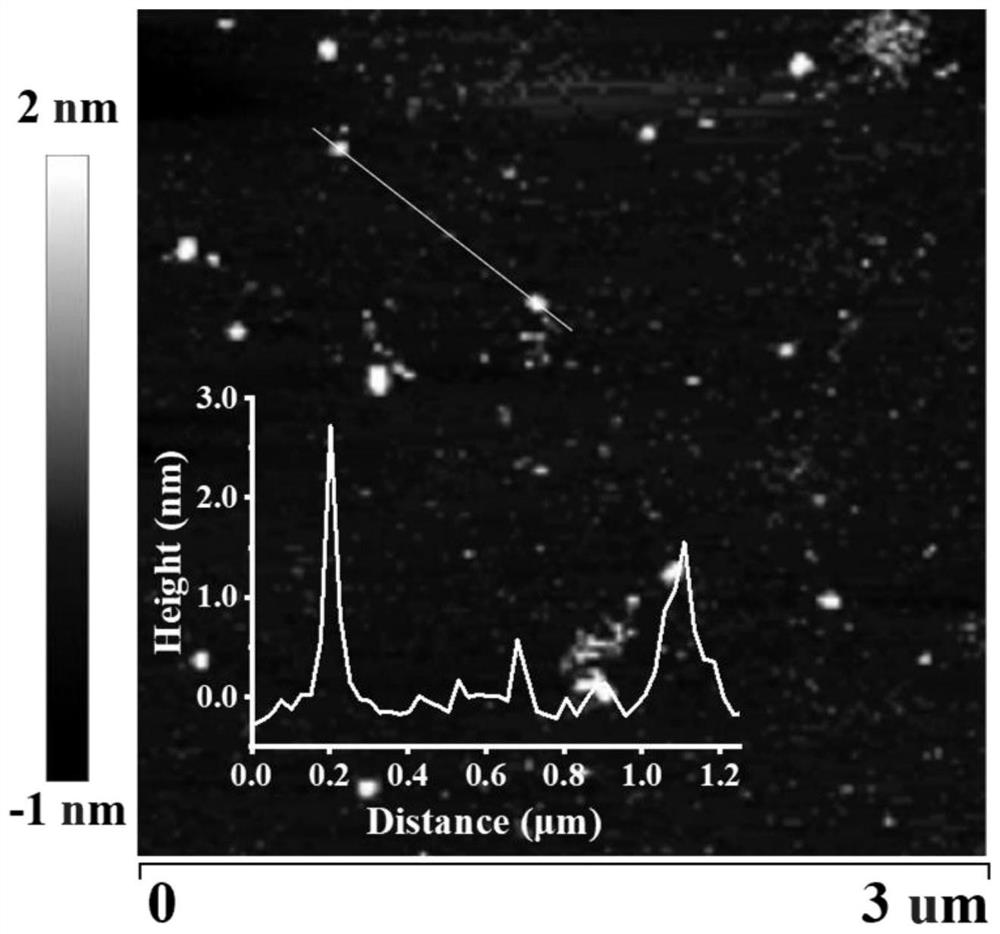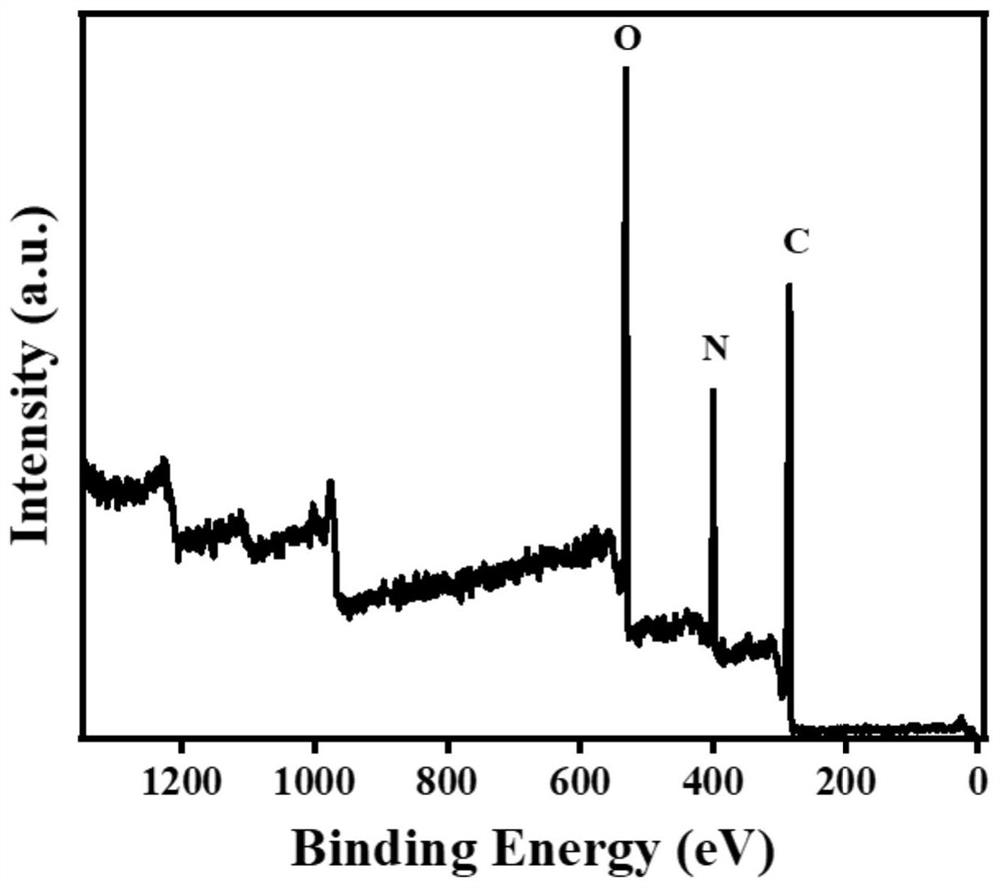Red light emitting carbon nanodot and preparation method and application thereof
A carbon nano-dot, red light technology, applied in nano-carbon, nano-technology, nano-optics and other directions, can solve the problems of high process requirements, poor structural stability of red light-emitting carbon nano-dots, complicated preparation methods, etc., and achieve high fluorescence quantum yield. efficiency, enhanced single-photon down-conversion and multi-photon up-conversion fluorescence
- Summary
- Abstract
- Description
- Claims
- Application Information
AI Technical Summary
Problems solved by technology
Method used
Image
Examples
preparation example Construction
[0049] An embodiment of the present invention provides a method for preparing red light-emitting carbon nanodots, comprising the following steps:
[0050] S1, synthesis
[0051] By mixing citric acid and urea with formic acid for solvothermal reaction, highly efficient red-emitting carbon nanodots were synthesized via a one-step solvothermal method without complicated purification procedures.
[0052] In the actual operation process, citric acid and urea were dissolved in formic acid, then put into the reaction kettle, heated at high temperature, and subjected to solvothermal reaction to obtain a reddish-brown liquid, that is, to obtain red light-emitting carbon nanodots.
[0053]In some embodiments, the mass ratio of citric acid and urea is 1:1-4; preferably 1:2-3. By further controlling the mass ratio of citric acid and urea, it is beneficial to further improve the performance of the synthesized carbon nano-dots and improve the fluorescence quantum efficiency of the carbon ...
Embodiment 1
[0074] This embodiment provides a method for preparing red light-emitting carbon nanodots, comprising the following steps:
[0075] Dissolve 2g of citric acid and 4g of urea in 20mL of formic acid, put the liquid into a 50mL polytetrafluoroethylene autoclave, heat the reaction, the reaction temperature is 160°C, the reaction time is 4 hours, the heating method is oven heating, after the reaction Add 60 mL of ethanol to the solution, centrifuge at 10,000 rpm, remove the upper layer solution, leave a layer of sediment, centrifuge 3 times, and freeze-dry the lower layer of sediment to obtain a black solid powder that is red light-emitting carbon nanodots (FA-CDs).
Embodiment 2
[0077] This embodiment provides a method for preparing red light-emitting carbon nanodots, comprising the following steps:
[0078] Dissolve 1g of citric acid and 2g of urea in 10mL of formic acid, put the liquid into a 30mL polytetrafluoroethylene autoclave, heat the reaction, the reaction temperature is 160°C, the reaction time is 4 hours, the heating method is oven heating, after the reaction Add 20 mL of ethanol to the solution, centrifuge at 8000 rpm, remove the upper layer solution, leave a layer of sediment, centrifuge twice, and freeze-dry the lower layer of sediment to obtain a black solid powder that is red light-emitting carbon nanodots.
PUM
| Property | Measurement | Unit |
|---|---|---|
| size | aaaaa | aaaaa |
| size | aaaaa | aaaaa |
| height | aaaaa | aaaaa |
Abstract
Description
Claims
Application Information
 Login to View More
Login to View More - R&D
- Intellectual Property
- Life Sciences
- Materials
- Tech Scout
- Unparalleled Data Quality
- Higher Quality Content
- 60% Fewer Hallucinations
Browse by: Latest US Patents, China's latest patents, Technical Efficacy Thesaurus, Application Domain, Technology Topic, Popular Technical Reports.
© 2025 PatSnap. All rights reserved.Legal|Privacy policy|Modern Slavery Act Transparency Statement|Sitemap|About US| Contact US: help@patsnap.com



